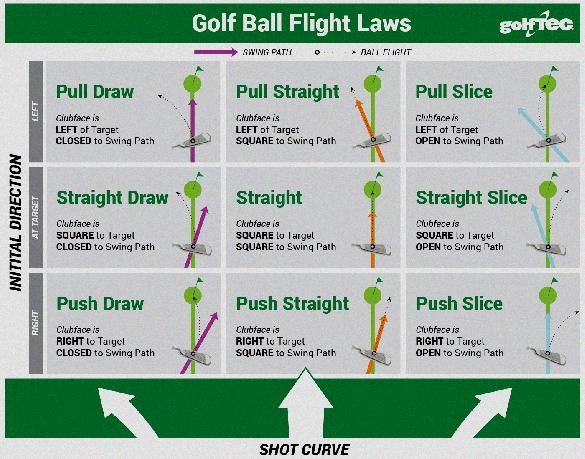
There are many myths around the golf driver's impact position. How can you determine if you're hitting it in the right spot? This article will discuss the importance of a solid strike, the signs that your ball is in an incorrect position, and the angle of attack. These myths are explained, and the ways you can correct them. Continue reading for more information!
It is important to strike a good deal
It is essential to properly tee off the ball to ensure you hit a solid shot. As this will alter the angle of attack at impact, don't let your club head sit too high/low. In order to hit a perfect shot, the angle should be 0 degrees or less. There are many ways to achieve the perfect angle for your shot.
For drivers, signs you are in an incorrect ball position
It is a good idea to pay attention to the ball's trajectory to determine whether you are hitting down. Your golf swing is affected greatly by where the ball is placed. If it is not correctly placed, you can expect to hit poor shots. Incorrect ball position can be difficult to recognize in your own swing, but you can recognize it when you notice excessive spin on the ball.
Angle of attack
Angle of Attack is one of most crucial fitting parameters. Angle of attack is a key parameter that true Spec Master Fitters consider. It can have an effect on the trajectory of a ball and the distance it travels from the clubface. A positive angle of attack promotes a higher ball flight, while a negative one tends to impart more backspin. A positive angle of attack is best for your driver as it will be most commonly used for long shots.

Shaft lean
Golf driver impact position is a great way to get shaft lean. This allows you to generate more power without putting your hands on the club. It prevents golfers from making the common mistake, putting their hands in front and not behind the club. This angle, known as the Shaft Lean Angle, is created by the coordination of the arms and hands. This concept is often misunderstood by beginners.
FAQ
What is the difference between a driving course and a putting-green?
A driving range allows players to practice hitting balls from distances of 50 yards to 300 yards. To practice putting, players use putting greens.
What kind of clubs do I need?
There are many types and styles of clubs. The driver is the most common type of club. This allows players to hit more balls. Other clubs include putters, irons wedges, wedges, woods, and irons.
Woods are longer clubs, designed to let players get as close to the pin as possible while still being able reach the green. They are often used for long drives and approach shots.
Irons are shorter clubs, which are made to allow players to hit the ball closer towards the pin. These clubs are used often for chipping and putting, as well as short-distance shots.
These are special clubs that can be used to control the ball's flight path. These are used to direct shots that require precise direction.
Putters are small clubs which can be used to roll the ball towards cups. They can be used by players for short putts.
What type of shot do you want to make determines the type of club that you choose. Different types of shots work better in different clubs.
Drivers can help you hit the ball further than expected. Wooden woods are excellent for driving long distances. Irons are great for making short shots. Wedges are excellent at controlling the flight of the ball. Putters are great for rolling the ball into a hole.
How can I learn how to play golf?
Golf is a skill that takes practice and time. But, you can improve your game. Here are some tips to help you:
-
Keep practicing. Golf requires constant attention and concentration. Practice is the best way to improve your game.
-
Play with people who can play. Playing with other people will help you develop your style of play.
-
Before you practice, learn about golf. This will give an overview of your needs.
-
Try not to learn everything at once. Concentrate on one aspect in your game. One example is to work on your putting and chipping skills. Move on to the next area of your game when you feel confident.
-
Take lessons. You can learn important things such as stance, swing speed and posture.
-
Try new techniques. Try out new grips, stances or swings.
-
Keep records. Keep track of your progress by recording your scores. This will help you to see the areas you need to improve.
-
Join a local club. There are many clubs that offer free lessons. Many clubs offer free lessons and have helpful members who are willing to help newcomers.
-
Hire a coach. You can get guidance from a professional coach on certain areas of your game.
What are the differences between different golf courses?
Golf courses come in all shapes and sizes. Some are for beginners and others for experienced players.
Some golf courses are located near lakes, rivers, mountains, and forests. Others are situated in urban areas. You will find everything from public golf courses to private estates.
What is a Bogey?
A bogey, or bogey, is a number that golfers use as a target. It is not actually part of the game but rather a way of keeping score. The hole goes to the player who is closest to the number.
The concept of a bogey was invented by Jock Hutchison, the first professional golfer from Scotland. The idea was formed while he was playing at home.
He wanted to keep track his progress so he wrote down a number and stuck it to the wall over his bed. This became known as "Hutchy Bogey."
Statistics
- They do this by means of assessing and rating courses according to the average good score of a "bogey golfer," a player with a handicap of around 20. (en.wikipedia.org)
- They do this by means of assessing and rating courses according to the average good score of a "bogey golfer," a player with a handicap of around 20. (en.wikipedia.org)
- Professional golfers typically make between 60% and 70% of greens in regulation. (en.wikipedia.org)
- In the United States, women made up 25 percent of golfers in 2021, which was up from 19 percent in 2011, and junior female golfers account for 35 percent or 1.1 million golfers.[50] (en.wikipedia.org)
External Links
How To
How to get the perfect Bunker Shot
A bunker shot is a type of golf shot where you aim at a specific spot on the green (the hole) to make sure your ball lands there without bouncing off the surface. This is done by taking advantage of the slope of the green. The idea is to get the ball into the most direct path possible towards the hole.
Playing golf requires you to determine the best line for reaching your target. It is important to consider factors like distance to the target, terrain type, whether the ball has to bounce off of the ground or fly straight and weather conditions.
First, understand the basics of bunker shooting. You must first determine whether you are facing uphill or downward. You will need a drawing club if you are going uphill. If you're facing downhill, you'll need to swing with a fade. Next, calculate how fast you must move your body to stop it from bouncing off green. This is done by measuring how far the ball is from you and which direction it is going. You will also need to determine the size of the bunker that you are aiming for.
Once you've figured these things out, you can start swinging. As you would with any other shot, swing hard enough for the ball to go past the club head. But slow enough to keep the ball from bouncing off green. Once you have the speed and trajectory you want, you can start to approach. Slowly approach your ball until you're close enough to the landing area. After you have taken one last look at your ball, release it. If all goes according to plan you will have a flawless bunker shot.